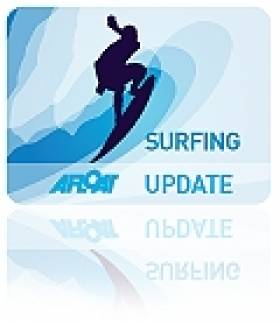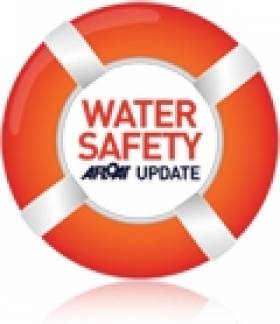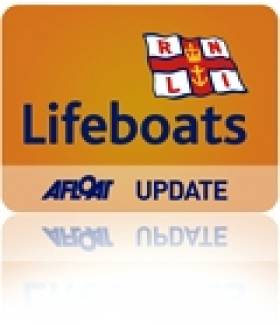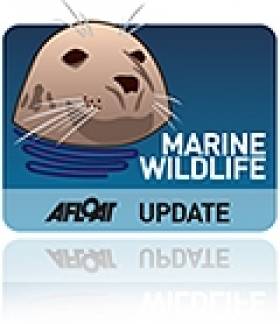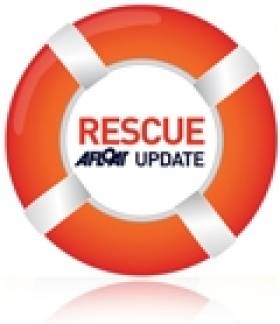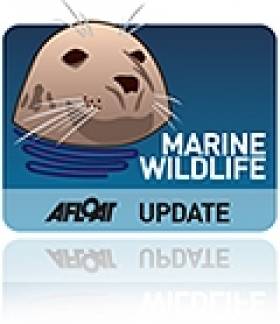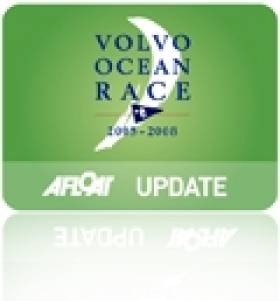Displaying items by tag: video
Video Shows Multi-Million-Dollar Yacht Capsize At Launch
#Capsize - The video above shows the heart-sinking moment when a $10 million yacht capsized during its launch in the United States' Pacific Northwest last month.
NBC News has more on the story of the explorer-type yacht Baden, which was being slowly lowered into the water from a ramp at Anacortes, north of Seattle in Washington state, when it began listing to port before suddenly dropping on its side.
The evidence so far suggests a problem with the dolly being used to launch the yacht, which has six people on board at the time of the incident. No injuries were reported.
Production has meanwhile been suspended by the yacht's builder, New World, which has also laid off its staff of some 50 workers.
#Surfing - Looking for somewhere to hit the waves as summer's sunny days loom on the horizon?
IrishCentral has got you covered with some spectacular videos of Ireland's top surfing spots.
From the Causeway Coast to the big wave haunts of Donegal and Sligo and the more hidden surfing hubs of the East Coast, there's a spot for surfers of all skill levels.
New Tech To Revolutionise Sailing Stories In VOR
#VOR - The latest video update following the construction of the new one-design yacht debuting in next year's Volvo Ocean Race looks at the state-of-the-art technology that will be installed both on board and on shore to make the 12th running of the race the most connected yet.
Three VOR 65s are at Green Marine in Southampton at various stages of completion, awaiting the final detailed fittings before they can take to the water for their first sea trials.
Those fittings include the latest in communications technology that will hopefully combine the sailors' experiences - via self-shot smartphone video and on-deck camera positions - with the raw numbers from their boat's telemetry data to provide the most detailed stories yet.
The on-shore media centre, too, will be fully connected to all the action via specially outfitted workstations that will let journalists write, edit and transmit from the one spot.
Video: RNLI Gives Top Help Tips For Kayakers
#WaterSafety - The RNLI has posted the above video outlining what kayakers can do to call for help if they get into difficulty on the water.
Taking a whistle along for the trip is one sensible idea, as is ensuring a means of longer-range communication such as a VHF radio or a mobile phone in a dry case.
Carrying a flare may also prove handy, and there's always that old standby if other water users are within earshot - shouting as loud as you can to attract attention.
Wicklow RNLI Tows Yacht With Three To Safety
#RNLI - A drifting yacht with three people on board was towed to safety by Wicklow RNLI on Friday morning (26 July). SEE VIDEO BELOW
The volunteer lifeboat crew was alerted by pager shortly before 8am after the Irish Coast Guard received a call for assistance from a yacht in difficulties off Wicklow Head.
The lifeboat, under the command of coxswain Nick Keogh, was alongside the yacht 20 minutes after launching.
Crew member Ciaran Doyle was put on board the boat to assist with establishing a tow line. He remained onboard the yacht as it was towed into Wicklow Harbour.
The boat with the three people was secured safely alongside the east pier at 9.20am.
Weather conditions in the area at the time were described as wind south west force two, and the sea state was calm.
Speaking after the incident, Keogh said: "We located the 14-metre yacht drifting five miles south east of Wicklow Head. The yacht had lost engine power and with the light winds they were unable to make any headway."
The crew on the call out were coxswain Nick Keogh, mechanic Brendan Copeland, Ciaran Doyle, Dave O'Leary, Carol Flahive, Tommy Murphy, Alan Goucher and Peter McCann.
Dusty The Dolphin Gets Dangerous With Doolin Dippers
#MarineWildlife - Dusty the dolphin has injured yet another swimmer off Doolin Pier in Co Clare in the latest of a recent spate of incidents, as The Irish Times reports.
Last night a woman was hospitalised after being struck by the dolphin's nose in the kidney area, leaving her "badly bruised and shocked by the incident".
It's since emerged that this was the fourth such attack by the bottlenose dolphin in the past month.
The cetacean responsible - a 14-year-old female - has made Doolin her home after many years in the Fanore area, and has apparently been responsible for a number of attacks on swimmers over the last two years.
But visitors continue to swim with the dolphin despite warnings by the Irish Whale and Dolphin Group (IWDG), which discourages any interference with the protected species.
The Irish Times has more on the story HERE.
Video Shows Kayaker's Close Encounter With Basking Shark
#MarineWildlife - An angling kayaker has spoken of his surprise at being "stalked" by a basking shark off Donegal.
The Irish Times yesterday posted video of the close encounter captured by Graham Smith while paddling along the coast.
As Smith told the Irish Independent, he was only hoping to catch a tope shark when he came upon a school of basking sharks off the Inishowen Peninsula.
And when one of them started following him, Smith went into panic mode - but soon realised the shark was more interested in the slipstream of his kayak, which provided a steady source of plankton for the giant filter feeder.
The second biggest fish in the sea after the whale shark, basking sharks are now a regular sight in Irish waters, with protections on the endangered species resulting in a boom in numbers.
Teen Rescued From Howth Cliff Edge
#Rescue - TheJournal.ie reports that 15 members of the Irish Coast Guard's Cliff Rescue Unit were involved in the rescue of a 16-year-old boy trapped on a cliff edge on Howth Head in North Dublin on Saturday evening (6 July).
According to Howth Coast Guard, the teen had tried to climb up from the beach at Whitewater Brook but became stranded halfway up the cliff face.
Coastguard staff received the emergency call around 9.40pm and the rescue unit was on scene within 10 minutes. The teen was quickly recovered to the cliff top with no reported injuries.
Whitewater Brook was recently the scene of a joint cliff rescue training exercise involving the Howth Coast Guard and the Irish Red Cross.
Dingle Seal Sanctuary Welcomes New Arrivals
#MarineWildlife - Wildlife enthusiast Karl Grabe has posted on YouTube video of newborn seal pups rescued by the Dingle Wildlife and Seal Sanctuary last week.
Named by staff at the sanctuary as Salt, Pepper, Sugar and Cocoa, the four are as cute as buttons - and anyone who visits over the summer can see them or others like them, such as two-week-old Molly who's also featured in the above clip.
VOR Women Smash Racing Records Off Lanzarote
#VOR - Team SCA have been posting some record-breaking times in their training runs off Lanzarote as of late, as the official Volvo Ocean Race website reports.
Most recently the all-female team set a new record from Puerto Calero to La Palma Marina last weekend. This achievement followed their victory in the Round Lanzarote Race last month - their first competitive event sailing together as a team.
"It was a fairly big milestone in our preparations and we were lucky to have great conditions, which enabled us to get the race record," said Vendee Glone veteran Sam Davies, who captains a squad of world-class racing women eager to jump into their next challenge - the Rolex Fastnet Race in August.
Meanwhile, the Volvo Ocean Race is currently celebrating its 40th anniversary, and put together the short film above "about the spirit and the people behind sport's ultimate test of character".
The heat is already on for the return of the race in October next year, with the new design VOR 65 coming together nicely.
In the latest video update following the new yacht's construction, VOR's Rick Deppe visits the Gottifredi Maffioli factory in Italy where the ropes are being made:



























